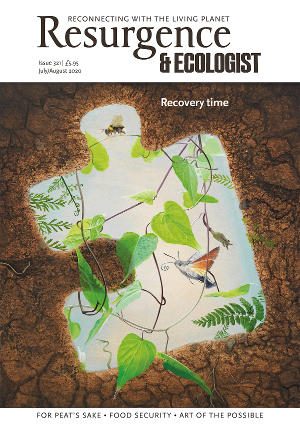“As long as I can remember I’ve been fascinated by fungi and the transformations they provoke,” writes Merlin Sheldrake in this stunning, luminous exploration of a neglected kingdom of life. Without fungi, we’d have no bread or alcohol. They nourish plants and trees and create soil. They gave us the first antibiotics and mind-altering drugs. But they are often overlooked: science has only described 6% of fungi species. Entangled Life is a celebration of these underlings of the living world.
Sheldrake is best known for exploring the hidden ‘social’ network of fungi that run underneath forests, known colloquially as the Wood Wide Web. With great skill, in this, his first book, he knits together his life experiences with scientific research, and his imagination with experimentation. Even the ink for the book’s black-and-white illustrations comes from ink cap mushrooms. His intoxication is infectious.
In beautiful, poetic language, Sheldrake describes his time at a biology field camp in Panama searching the forests for blue-flowered plants that have lost the ability to photosynthesise. He takes us with him to Italy to join camouflaged hunters and their highly trained dogs looking for truffles, and he lies naked up to his neck in a Japanese ‘fermentation bath’ of decomposing wood chips. Yet Entangled Life is a scientific book, and in parts the ground covered is dense. But Sheldrake is a lively and knowledgeable guide. At the margins of my copy, I kept scribbling ‘Wow!’ as I discovered that some fungi harvest the energy given off by radioactive particles and thrive in the ruins of the nuclear reactor at Chernobyl; or that experiments outside the International Space Station prove that lichen – a union of fungi and algae or bacteria – can remain alive even when unprotected in space. These are the great survivors and recyclers.
My hope for the future of the world was raised a notch by the book’s argument that fungi could be humanity’s best ally in the great clean-up of the Earth. White-rot fungi, which evolved to break up wood from dead trees, can be ‘trained’ to feed on waste, whilst other fungi have survived on a diet of crude oil, plastics, and even cigarette butts. Our civilisation’s discarded rubbish is their feast. They may also help save pollinators: we meet American mycologist Paul Stamets, who has pioneered a technique to ward off colony collapse disorder by exposing bees to a protective fungus.
What intrigued me even more was the author’s description of taking part in a scientific study of LSD, itself derived originally from a plant fungus. While under the influence of the drug, he tries to enter imaginatively into the essential otherness of fungi, and resists the temptation “to hide in small rooms built from quick answers”. Scientists can be queasy about acknowledging that imagination or metaphor can influence how we see the world, but Sheldrake has a rare philosophical awareness of this. He does not see living things only as biological machines to be catalogued and boxed. In this, he advances the tradition of insightful holistic biologists like Alexander von Humboldt and Lynn Margulis.
If you’re already fascinated by fungi, you’ll find something new in this book. If, like me, you love Nature but rarely think of mushrooms for longer than it takes to fry them in a pan, it will open your eyes to how our lives are made possible by their mysterious powers.







